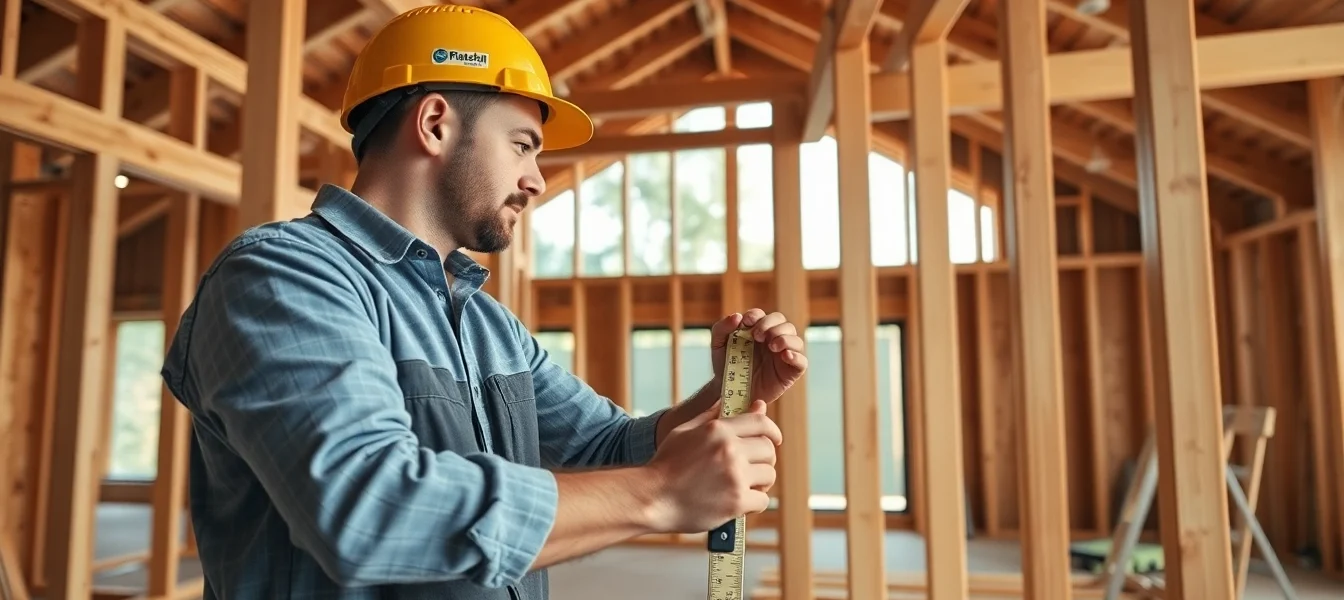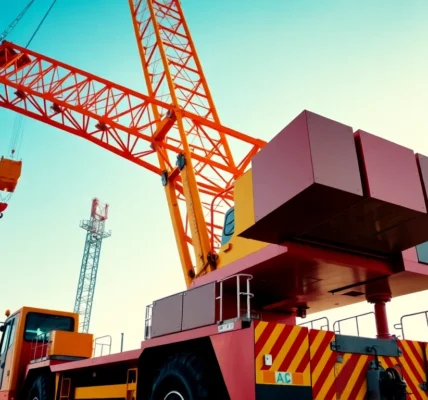Mastering Framing: Essential Techniques and Tips for Building Strong Structures
Introduction to Framing: Foundations of Structural Integrity
Framing is the backbone of any building or structure, providing essential support, shape, and stability. Whether you are constructing a residential home, an commercial facility, or undertaking a renovation project, understanding the fundamentals of framing is critical to ensuring safety, durability, and compliance with building standards. In this comprehensive guide, we’ll explore the intricacies of framing, from basic concepts to advanced techniques, offering practical insights to both professionals and DIY enthusiasts alike. To start, for those interested in the aesthetic and protective aspects of framing, visit Framing to get an overview of quality framing services and materials.
Understanding the Basics of Framing in Construction
At its core, framing involves assembling the structural skeleton that supports the entire building. It acts as the framework that shapes the structure, bears loads, and provides attachment points for walls, floors, ceilings, and roofing systems. The primary goal of framing is to create a stable, accurate, and durable support system that can withstand environmental forces such as wind, snow, and seismic activity while accommodating the design and functional requirements of the building.
Framing is integral to architectural design, influencing both the aesthetic and functional aspects of a structure. The choice of framing method and materials directly impacts construction speed, cost, insulation, and long-term performance. Focused planning and precise execution are paramount to avoid costly errors and safety issues.
Fundamentally, framing processes in construction encompass three key phases: planning and design, material selection, and execution. These phases are interconnected, demanding comprehensive understanding and meticulous application to achieve optimal results. An understanding of these basics sets the foundation for exploring various framing types, materials, and techniques used across different project scales.
Types of Framing Materials and Their Uses
Wood Framing
Wood remains one of the most traditionally used framing materials, especially in residential construction. Its advantages include ease of use, availability, cost-effectiveness, and a relatively quick assembly process. Types of wood framing include platform framing, also known as stick framing, and balloon framing. Wood is suitable for most non-load-bearing and load-bearing walls and can be easily modified or repaired.
Steel Framing
Steel framing offers superior strength-to-weight ratio and resistance to pests, fire, and rot. It is increasingly common in commercial, industrial, and high-rise buildings. Steel components are fabricated with high precision, resulting in tight tolerances and high durability. Steel framing also enables longer spans and open interior spaces, reducing the need for interior load-bearing walls.
Concrete and Masonry
While solid concrete is primarily used for foundations and load-bearing walls, autoclaved aerated concrete (AAC) and concrete blocks are also popular for framing certain sections. These materials provide excellent fire resistance and thermal mass but are heavier and require specialized skills and equipment.
Composite and Modern Materials
Recent innovations include engineered wood products like laminated veneer lumber (LVL) and cross-laminated timber (CLT), offering greater strength and stability with environmentally friendly profiles. These materials combine the benefits of wood and other composites to meet sustainability and performance standards.
Choosing the right material depends on project requirements, budget, local codes, and environmental considerations. For detailed comparisons, consult expert resources or professionals to optimize material use.
Common Challenges in Framing Projects and How to Overcome Them
Measurement and Accuracy Errors
Incorrect measurements and misaligned components can compromise structural integrity and lead to costly corrections. To mitigate this, invest in precision measurement tools, double-check all dimensions, and employ accurate marking techniques. Use of laser levels and digital tape measures enhances accuracy.
Material Defects and Supply Chain Issues
Material quality is crucial; defective or substandard materials can weaken the entire structure. Establish reliable suppliers, inspect materials upon delivery, and adhere to standards specified in building codes. Planning ahead helps prevent delays caused by supply shortages.
Inadequate Design and Planning
Poor planning can result in structural weaknesses, code violations, and safety hazards. Collaborate with architects and engineers during the design phase, ensuring all plans are detailed, feasible, and compliant. Use Building Information Modeling (BIM) tools to visualize and optimize framing layouts.
Environmental and Site Conditions
Unfavorable site conditions, such as uneven terrain, moisture, or unstable soil, can affect framing stability. Conduct thorough site assessments, utilize appropriate foundation systems, and incorporate weather-resistant materials to mitigate these challenges.
Solutions and Best Practices
Adopting best practices like continuous safety training, detailed project scheduling, quality assurance protocols, and regular inspections can significantly reduce errors and delays. Incorporate feedback loops to learn from issues encountered during previous projects, fostering continuous improvement.
Design and Planning for Effective Framing
Blueprints and Measurements: Ensuring Precision in Framing
Accurate blueprints and measurements form the backbone of successful framing projects. Working from detailed, scaled drawings ensures all components fit correctly and function safely. Key elements include wall placement, stud spacing, header sizes, and opening locations.
Practitioners should verify measurements on-site, considering factors such as material thickness, allowances for insulation or finishes, and potential site irregularities. Leveraging digital tools like CAD and structural analysis software enhances precision and coordination among team members.
Choosing the Right Framing Techniques for Your Project
Selecting an appropriate framing technique depends on project scope, design, budget, and local codes. Common techniques include:
- Platform framing: Widely used, easy to learn, suitable for most residential projects.
- Balloon framing: Less common today; provides taller wall heights but has fire safety concerns and requires more material.
- Steel framing: Suitable for commercial high-rises or structures demanding high durability and precision.
- Mass timber: Environmentally friendly option for large open spaces, providing aesthetic appeal and sustainability benefits.
Integrating Building Codes and Safety Standards
Building codes regulate minimum safety and quality standards for framing. They specify load capacities, fire safety, insulation requirements, and seismic considerations. Staying compliant involves consulting the International Building Code (IBC), local amendments, and industry standards.
Incorporate safety measures such as proper bracing, fall protection, and PPE protocols throughout the planning and execution phases. Engaging certified professionals ensures adherence and reduces liability.
Executing Framing with Skill and Accuracy
Step-by-Step Framing Construction Process
The typical framing process involves several sequential steps, including:
- Site preparation: Clearing, leveling, and establishing the foundation.
- Foundation construction: Pouring concrete slabs or laying footings.
- Wall and floor framing: Erecting sill plates, stud walls, and joists according to plans.
- Roof framing: Installing rafters, trusses, or other support systems.
- Bracing and sheathing: Adding diagonal braces and exterior sheathing for stability.
- Inspection and adjustments: Ensuring alignment, plumbness, and compliance before finishing.
Tools and Equipment Every Framer Should Have
Professional framers rely on a suite of specialized tools, including:
- Measuring tapes, squares, and levels for precision.
- Saws (circular, miter, reciprocating) for accurate cuts.
- Hammers, nail guns, and fasteners for assembly.
- Power drills, chisels, and pry bars.
- Safety equipment: helmets, gloves, eyewear, and fall harnesses.
Quality Control and Inspection During Framing
Regular inspections during each phase help identify issues early. Key checks include verifying correct dimensions, proper fastening, alignment, and adherence to safety standards. Documenting inspections enhances accountability and ensures standards are maintained throughout the project lifecycle.
Advanced Framing Strategies and Sustainable Practices
Innovative Framing Techniques for Modern Buildings
Modern construction leverages advanced framing strategies like:
- Advanced framing (California deconstruction): Uses less lumber by optimizing spacing and reducing thermal bridging.
- Prefab and modular framing: Assembled off-site for faster installation and higher precision.
- Hybrid systems: Combining steel and timber elements for optimized strength and flexibility.
Using Eco-Friendly Materials in Framing
Sustainability in framing promotes the use of renewable, recyclable, and low-impact materials, such as sustainably harvested wood, recycled steel, and engineered composites. Green building certifications like LEED reward innovative and eco-conscious framing practices.
Combining Efficiency with Durability in Framing Projects
Balancing energy efficiency with long-term durability involves selecting materials with high thermal performance, incorporating insulation strategies, and designing for resilience against environmental stresses. Proper detailing prevents issues like thermal bridging and moisture infiltration, extending the lifespan of the structure.
Performance Metrics and Continuing Education in Framing
Measuring Success: Structural Stability and Safety
Evaluation of framing success involves both quantitative and qualitative metrics, including:
- Structural load capacity and compliance with seismic and wind standards.
- Alignment and plumbness of walls and framing components.
- Inspection reports and safety audits.
- Long-term performance monitoring for stability and safety.
Training Resources and Certification Opportunities
Developing expertise requires ongoing education. Certifications from organizations such as the National Frame Builders Association (NFBA) or OSHA enhance credibility and knowledge. Workshops, online courses, and apprenticeship programs provide valuable skills enhancement.
Staying Updated with Industry Trends and Technologies
Innovative materials, building techniques, and digital tools continually evolve. Industry publications, trade shows, and professional networks help stakeholders stay at the forefront of framing advancements, ensuring best practices and competitive advantages.



